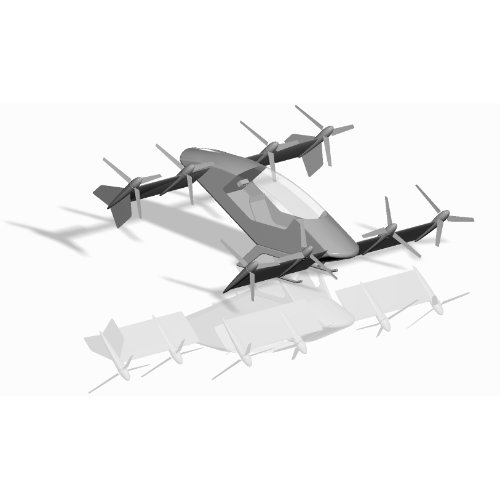Vahana
Airbus prototype tilt-wing aircraft analysis
Vahana Configuration Trade Study
Vahana is an A³ campaign to create a low-cost, single-passenger, electric VTOL aircraft. As part of their design process, A³ conducted the Vahana Configuration Trade Study to better examine 2 different configurations (an electric helicopter and an electric eight-fan tilt-wing) using multidisciplinary design optimization (MDO).
A³ set up a MDO sizing problem in which they compared an electric helicopter model and an electric eight-fan tilt-wing model over a range of operating distances (10 km to 200 km in 10 km steps). At each distance, both vehicle models were optimized seperately for Direct Operating Cost (DOC) by varying 5 design variables: Cruise Speed, Rotor Radius, Battery Mass, and Takeoff Mass. The A³ team also provided the optimizer with 3 constraint equations (4 if the vehicle was a helicopter) that defined certain design requirements (e.g.: the vehicle’s effective energy capacity had to be greater than the amount of energy required to execute a reserve (“worst case”) mission).
As a result of their Sizing Trade Study, the Vahana team concluded that an eight-fan, tilt-wing configuration would best meet their broad design requirements for a low-cost, single-passenger, electric VTOL aircraft.
OpenMETA Vahana Configuration Trade Study
Here at MetaMorph, we set out to first replicate the Vahana Configuration Trade Study’s results using the OpenMETA toolset. Since OpenMETA is designed for Multidisciplinary Design Analysis and Optimization, we thought that it would be interesting to see if we could reproduce the A³’s results using the OpenMETA toolset.
To read about the OpenMETA Vahana Configuration Trade Study, check out our blog post.
